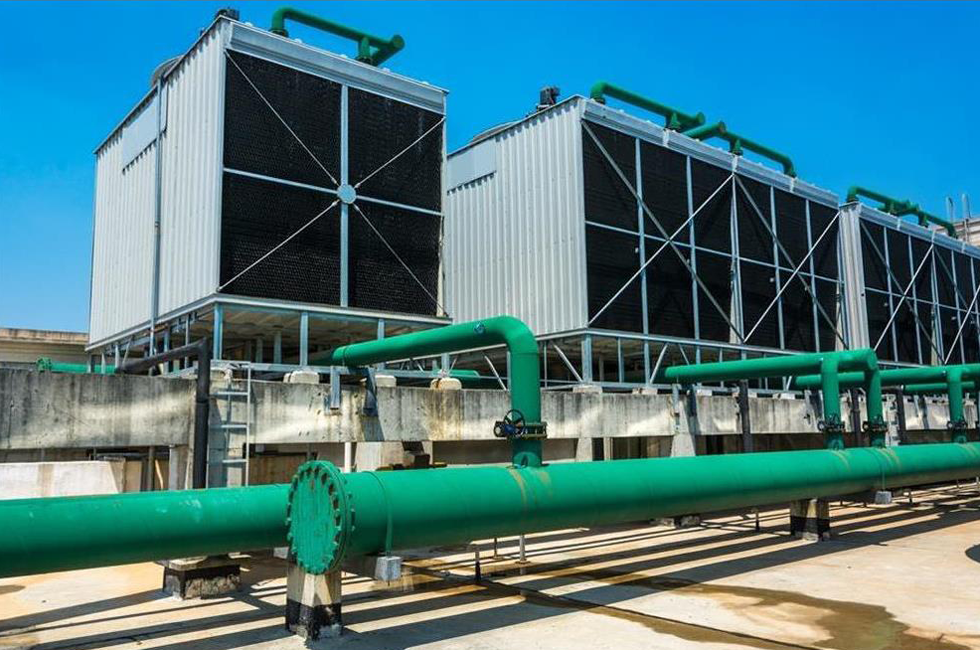What is a Chiller System and What are Its Applications
What is a Chiller System and What are Its Applications: Chiller is the general name for cooling systems and is a device used in industrial and commercial applications that operates with water or another cooling fluid. A chiller absorbs heat by evaporating the liquid coolant and then rejects the heat by turning the vapor back into liquid form. This process is used in many areas such as achieving desired indoor temperatures and humidity levels, cooling industrial processes, and storing products.
Types of chillers vary based on cooling methods and types of coolant used. Here are the main examples of chiller types:
Air-Cooled Chiller: An air-cooled chiller expels heat using the surrounding air. The chiller unit is positioned outdoors and provides cooling by using ambient air through fans. These chillers are typically not used indoors and are preferred for outdoor applications, such as large building HVAC systems and industrial processes.
Water-Cooled Chiller: A water-cooled chiller utilizes a cooling tower or water-cooling unit near the outdoor area where coolant water circulates. The coolant water absorbs heat from the chiller unit indoors and then dissipates it in the cooling tower. Water-cooled chillers are commonly used in large commercial buildings, industrial processes, and power plants.
VRF (Variable Refrigerant Flow) Chiller: VRF chillers use variable flow refrigerant to independently control cooling for different indoor zones. They are preferred for building HVAC systems as they allow multiple indoor areas to be controlled independently based on varying temperature needs.
Absorption Chiller: Absorption chillers operate using heat energy and the absorption principle instead of mechanical compressors for cooling. They work with sources such as fuel, steam, or solar energy and are typically used in industrial and large commercial buildings.
Chillers have a wide range of applications and offer cooling solutions tailored to different needs in various sectors. Here are the primary usage areas and specific examples of chiller systems:
Building HVAC Systems: Large office buildings, shopping malls, hotels, hospitals, and universities use chiller systems to maintain comfortable indoor temperatures and humidity levels.
Industrial Production: Chillers play a significant role in many industries such as chemical, petrochemical, food and beverage, pharmaceutical, plastic, automotive, and metal processing.
Food Storage and Processing: In the food industry, chiller systems are critical for storing, cooling, and processing products.
Ice Making: Restaurants, hotels, supermarkets, event venues, and other service sectors use chiller systems for ice production.
Data Centers: Data centers generate a lot of heat due to high temperatures and intensive processing power. Chiller systems are used to dissipate heat and ensure equipment cooling
Power Plants: Energy production facilities use chiller systems to remove heat generated from electricity production and meet cooling needs.
Pharmaceuticals and Laboratories: Pharmaceutical companies, research laboratories, and hospital labs use chiller systems for cooling sensitive equipment and conducting experiments requiring low temperatures.
Medical Imaging Devices: Medical imaging devices like radiology and nuclear medicine require strict temperature control for high precision and repeatability. Chiller systems meet their cooling needs to ensure accurate results.
Cryogenic Applications: Chiller systems are used for research and industrial processes that require low temperatures.
Chiller systems continue to play an important role in different sectors with advanced features such as energy efficiency, capacity control, and environmentally friendly refrigerants. These systems provide more efficient, eco-friendly, and cost-effective solutions for various applications.





